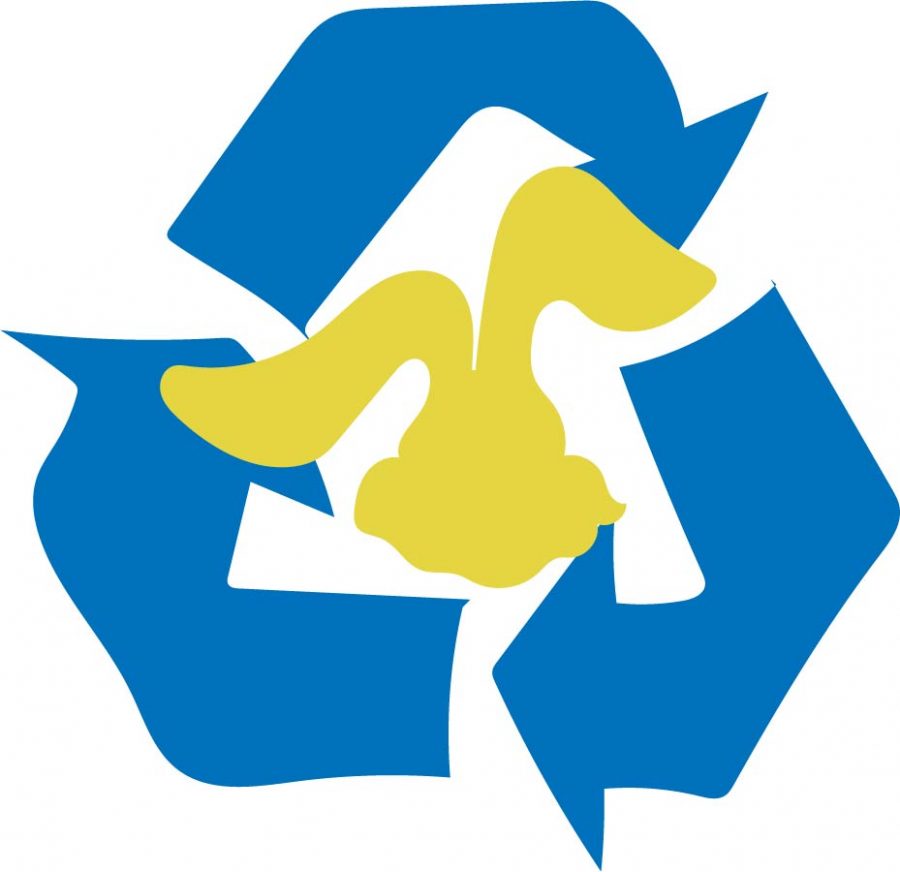Campus Race to Zero Waste promotes recycling
January 26, 2021
2021 will mark the 11th year that South Dakota State University has competed in Campus Race to Zero Waste, formerly known as RecycleMania. This is a nationwide competition between universities and colleges to see who can reduce the most waste and, of the waste that is generated, who recycles the most.
This year, national organizers changed the name to Campus Race to Zero Waste to shift the focus from recycling to reducing. As a competitor in the competition, we will shift our focus, too.
Why is there a need to focus more on reducing over recycling?
We have all heard the phrase – reduce, reuse, recycle. Reducing minimizes the amount of material made in the first place. Reusing takes material already made and repurposes it into something new. Recycling breaks material down into its components and remanufactures it into something new.
Did you know there is also meaning behind the order of the words in this catchphrase? Of the three, reducing has the most positive environmental impact and recycling has the smallest positive environmental impact. Reusing falls somewhere in between.
Reducing is the most effective means to mitigate the negative impact of waste, because it gets at the root of the environmental waste problem. To make products, it takes energy and the extraction of natural resources, both of which harm the environment in their own ways.
Fossil fuels are the main energy source of most factories, and this source of energy contributes to the climate change crisis. Extracting resources destroys the ecosystems in the area – driving animals from their home and disrupting critical natural processes. The disposal of waste also has issues, namely the leaching of chemicals into our environment and animals eating inedible food.
While certainly an important piece to the waste reduction puzzle, recycling is not the solution. Yes, it helps, but alone does not solve the issue. It still takes energy and the extraction of natural resources to make the products in the first place.
It also takes energy to recycle products. In addition, not all products are recyclable, so everything cannot be converted into a new product at the end of its lifespan.
To put the impact of reducing over recycling into perspective, consider a scenario where all approximately 11,000 students at SDSU each used one plastic water bottle every day of the year. Added together that equals 4.02 million plastic water bottles. Times that by the four years each student is on campus, and that brings the number to an incredible 16.06 million plastic bottles.
Now imagine each student utilized a single reusable water bottle throughout their four-year journey on campus. The number shrinks to just 11,000 water bottles. That is 16.06 million plastic water bottles that did not use energy to be produced, need to extract material from the core of our earth, or cause harm to the environment in its disposal.
The Campus Race to Zero Waste competition starts Jan. 31 and ends March 27. You can participate by reducing your waste and recycling all recyclable items. Follow @SustainSDState on Instagram and Facebook throughout the competition to track our weekly rankings and learn more about reducing, reusing and recycling.






















